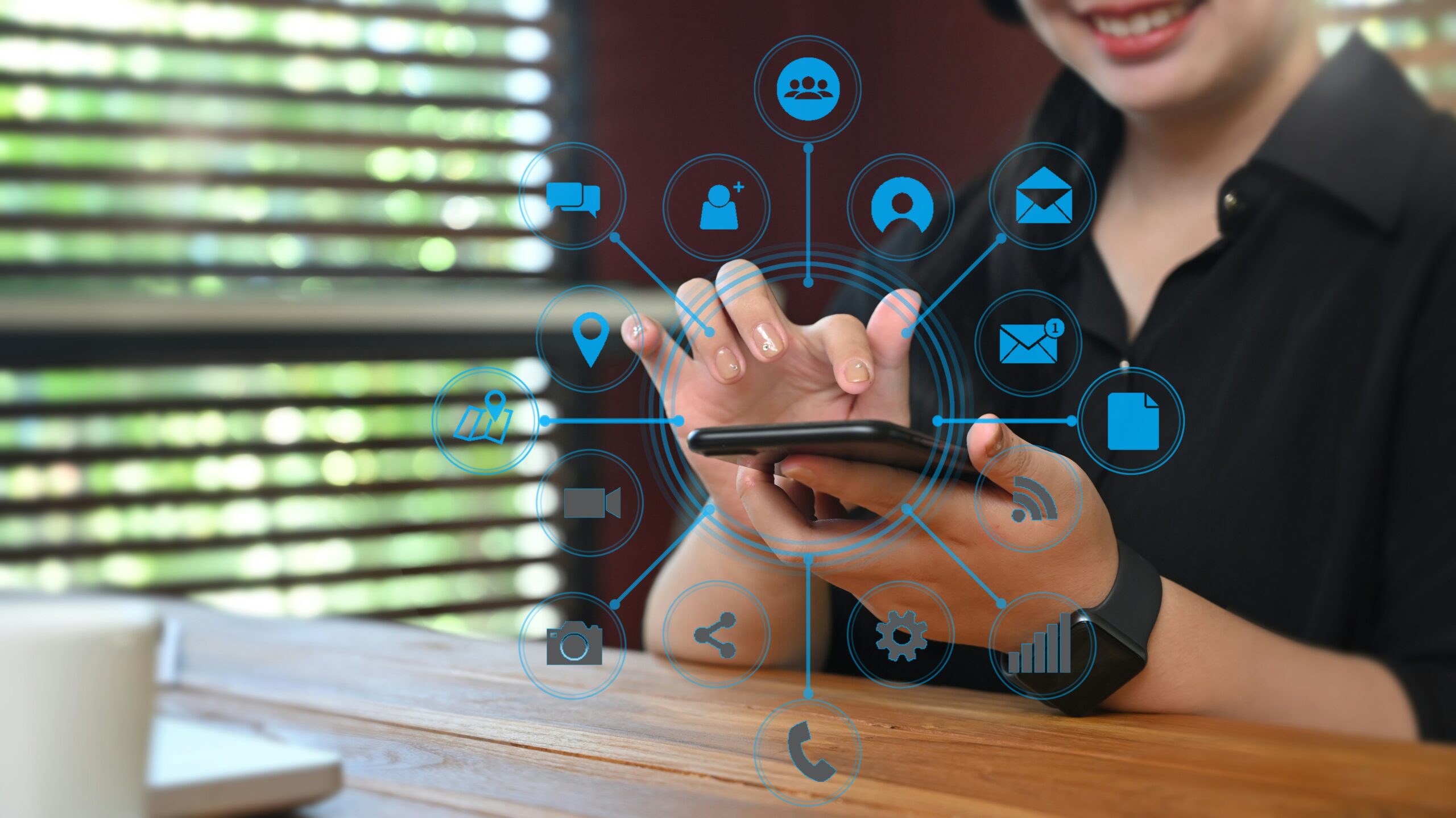The Essential Guide on How to Send a Secure Email
Email, while convenient, can also be vulnerable. Hackers and cybercriminals often target emails to steal data, spread malware, or commit fraud. To combat theses risks, users should follow best practices for email security.
In this guide, we will cover the essential tools and best practices to keep your email communications confidential and secure. From encrypted email services to implementing secure authentication methods, we will provide practical insights on how to safeguard your email communications effectively.
Risks of Email Communications

How to Secure Email Communications: Techniques and Best Practices
Securing email communication involves employing various methods to protect sensitive information. From utilizing encryption techniques to adopting secure email practices, there are various strategies available to protect your data from unauthorized access. In the following sections, we’ll explore each of these methods in detail.
Encryption
Email encryption is a fundamental technique that encodes the content of an email, making it unreadable to unauthorized individuals. This ensures that sensitive information remains confidential. There are several types of email encryption methods that can be employed to enhance the security of your communications:
End-to-End Encryption: This type of encryption ensures that only the intended recipient can decipher the contents of an email. It encrypts the message on the sender’s device and decrypts it only on the recipient’s device. This means that even if the email is intercepted during transmission, it remains unreadable to anyone other than the sender and recipient. End-to-end encryption provides a high level of security and is commonly used in messaging apps like Signal and WhatsApp.
TLS/SSL Encryption: Transport Layer Security (TLS) and its predecessor, Secure Sockets Layer (SSL), are encryption protocols that secure the connection between email servers during the transmission of messages. TLS/SSL encryption encrypts the data as it travels between servers, preventing interception and tampering by third parties. Many email providers and servers support TLS/SSL encryption by default, offering an additional layer of security for email communication.
S/MIME Encryption: Secure/Multipurpose Internet Mail Extensions (S/MIME) is a standard for public key encryption and digital signing of email messages. It uses digital certificates to encrypt and authenticate email content, ensuring both confidentiality and integrity. S/MIME encryption requires the sender and recipient to have digital certificates, which are issued by trusted Certificate Authorities (CAs). Once implemented, S/MIME encryption provides a secure method for exchanging sensitive information via email.
With these encryption techniques, which are often already integrated into email services, your information remains private and secure.

Choosing a Secure Email Provider
Now that we’ve covered the different types of email encryption, let’s delve into other practical steps you can take to ensure that your emails are sent securely. One step you can take is selecting a secure email provider. It is essential to consider several factors that can contribute to the overall security of your email communication. Here are some key features to look for:
Encryption Types: Opt for an email provider that offers robust encryption methods, such as end-to-end encryption or TLS/SSL encryption. These encryption protocols ensure that your emails are securely transmitted and protected from interception by unauthorized parties.
Privacy Policies: Review the provider’s privacy policies to understand how they handle your personal data and email content. Look for providers that prioritize user privacy and adhere to strict data protection regulations, such as GDPR or HIPAA compliance if applicable to your needs. Ensure the providers have transparent policies regarding data collection, storage, and sharing practices.
Security Features: Choose a provider that offers additional security features, such as two-factor authentication (2FA) or email encryption tools like PGP (Pretty Good Privacy) or S/MIME. These features add an extra layer of protection to your email accounts and help prevent unauthorized access.
By selecting a secure email provider that prioritizes encryption, privacy, and user authentication, you can enhance the security of your email communication and minimize the risk of unauthorized access to your sensitive information.

Secure Email Best Practices
When it comes to sending secure emails, following best practices is essential to protect your sensitive information from unauthorized access or interception. Here are some key secure email best practices to consider:
Use Strong Passwords: Ensure that you use strong, unique passwords for your email accounts. Avoid using easily guessable passwords and consider using a password manager to generate and store complex passwords securely.
Enable Two-Factor Authentication (2FA): Enable two-factor authentication (2FA) for an additional layer of security. 2FA requires users to provide a second form of authentication, such as a code sent to their mobile device, in addition to their password, before accessing their email accounts.
Be Wary of Phishing Attempts: Exercise caution when opening email attachments or clicking on links, especially if they are from unknown or suspicious senders. Phishing emails often mimic legitimate sources to trick recipients into revealing sensitive information or installing malware.
Regularly Update Software and Security Patches: Keep your email client, operating system, and antivirus software up to date with the latest security patches and updates. Regularly updating your software helps to patch security vulnerabilities and protect against potential threats.
Encrypt Sensitive Email Attachments: When sending sensitive information via email, consider encrypting email attachments or using password-protected files to add an extra layer of security. This ensures that even if the email is intercepted, the contents remain protected.
By implementing these secure email best practices, you can minimize the risk of unauthorized access to your email accounts and ensure the confidentiality and integrity of your email communication.

Third-Party Encryption Services
When seeking additional email encryption beyond what your email provider offers, third-party encryption services can be a valuable option. One of the most common methods is end-to-end encryption. This ensures that only the sender and intended recipient can access the content of an email, even if intercepted during transmission.
Popular third-party encryption services like ProtonMail, Tutanota, and Virtru offer end-to-end encryption features, providing users with enhanced security for their email communication. ProtonMail and Tutanota are renowned for their user-friendly interfaces and strong encryption standards, making them popular choices among individuals and businesses alike. Virtru, on the other hand, offers encryption as well as additional features like data loss prevention (DLP) and secure file sharing, catering to organizations with more complex security needs.
Pros of Using Third-Party Encryption Services
- Enhanced Security: End-to-end encryption ensures that only the sender and recipient can access email content, providing greater privacy and security.
- User-Friendly Interfaces: Services like ProtonMail and Tutanota offer intuitive interfaces, making it easy for users to send and receive encrypted emails.
- Additional Features: Some third-party services, like Virtru, offer additional security features such as data loss prevention and secure file sharing.
- Compatibility: These services are often compatible with various email providers, allowing users to encrypt emails regardless of their email client or provider.
Cons of Using Third-Party Encryption Services
- Cost: While some basic features may be available for free, premium features and advanced encryption options may require a paid subscription.
- Dependency on Service Provider: Users must rely on the third-party service provider to ensure the security and reliability of their encryption methods.
- Integration Challenges: Integrating third-party encryption services with existing email workflows and systems may require additional setup and configuration.
Overall, third-party encryption services offer a convenient and effective solution for enhancing email security with end-to-end encryption. However, users should carefully consider the pros and cons before deciding whether to utilize these services, taking into account their specific security requirements and budget constraints.
Frequently Asked Questions
RELATED TO: “How to Send a Secure Email”
What is the most secure way to send email?
The most secure way to send email is through end-to-end encryption. This method ensures that the content of the email is encrypted on the sender’s device and can only be decrypted by the intended recipient, providing the highest level of confidentiality and security.
How does email encryption work?
Email encryption works by encoding the content of an email in such a way that only the intended recipient can decode and read it. This is typically achieved through the use of encryption algorithms and cryptographic keys.
Why is email encryption important?
Email encryption is important because it helps to protect sensitive information from unauthorized access or interception. By encrypting your emails, you can ensure that only the intended recipient can access the content, even if the email is intercepted during transmission.
What is end-to-end encryption?
End-to-end encryption is a method of encrypting email communication in which the message is encrypted on the sender’s device and can only be decrypted by the recipient on their device. This ensures that the content of the email remains confidential and secure, even if it passes through multiple servers during transmission.
Can I use third-party encryption services with my existing email provider?
Yes, many third-party encryption services are compatible with various email providers and can be integrated into your existing email workflow. These services offer additional encryption features, such as end-to-end encryption, to enhance the security of your email communication.
How do I send a sensitive document via email?
To send a sensitive document via email securely: encrypt the document using encryption software or tools; password protect the document with a strong password; send the password to the recipient through a separate, secure communication channel (e.g., phone call or encrypted messaging app); and ensure that the recipient knows how to decrypt the document and provide any necessary instructions.
Conclusion: How to Send a Secure Email
Overall, learning how to send a secure email is essential. By understanding the risks associated with unsecured email communication and implementing best practices such as encryption and choosing secure email providers, individuals and businesses can safeguard their data from unauthorized access or interception. While email security requires diligence and awareness, the benefits of secure communication far outweigh the risks. With the guidance provided in this article, K3 Technology empowers users to send emails confidently, knowing that their information remains private and secure.






